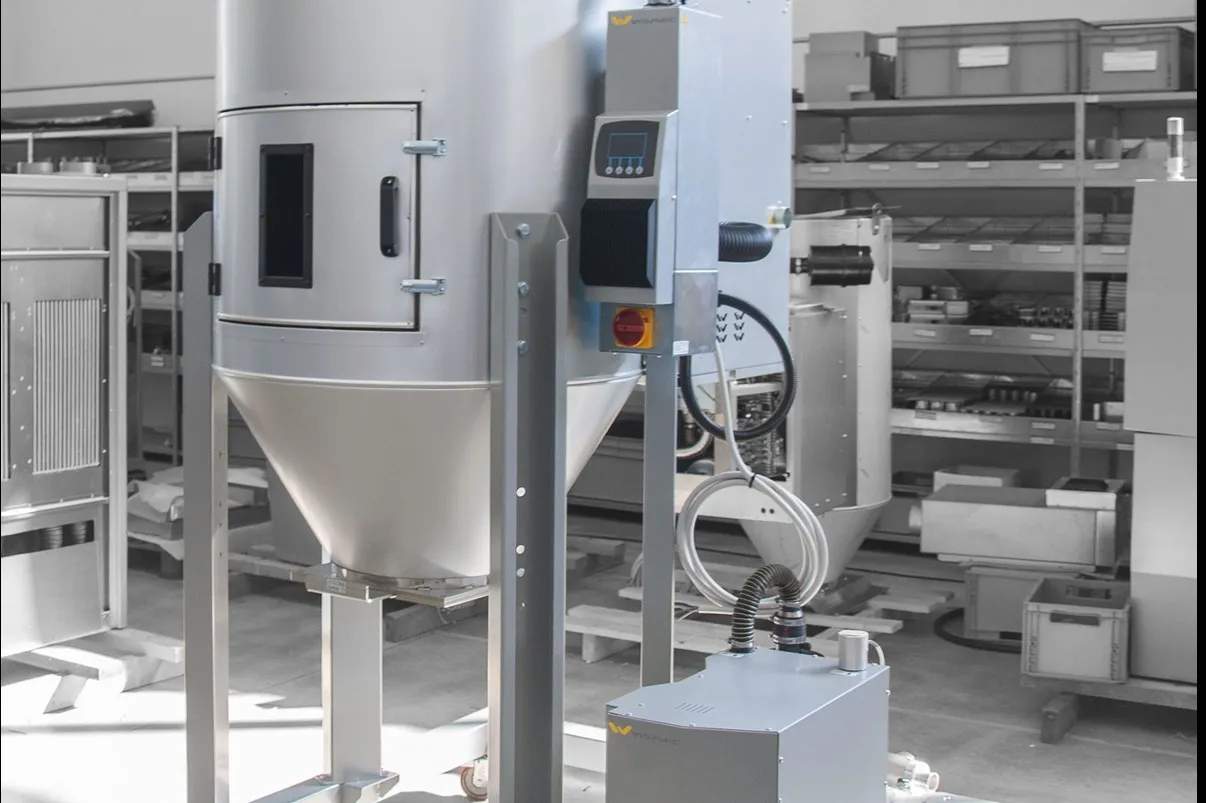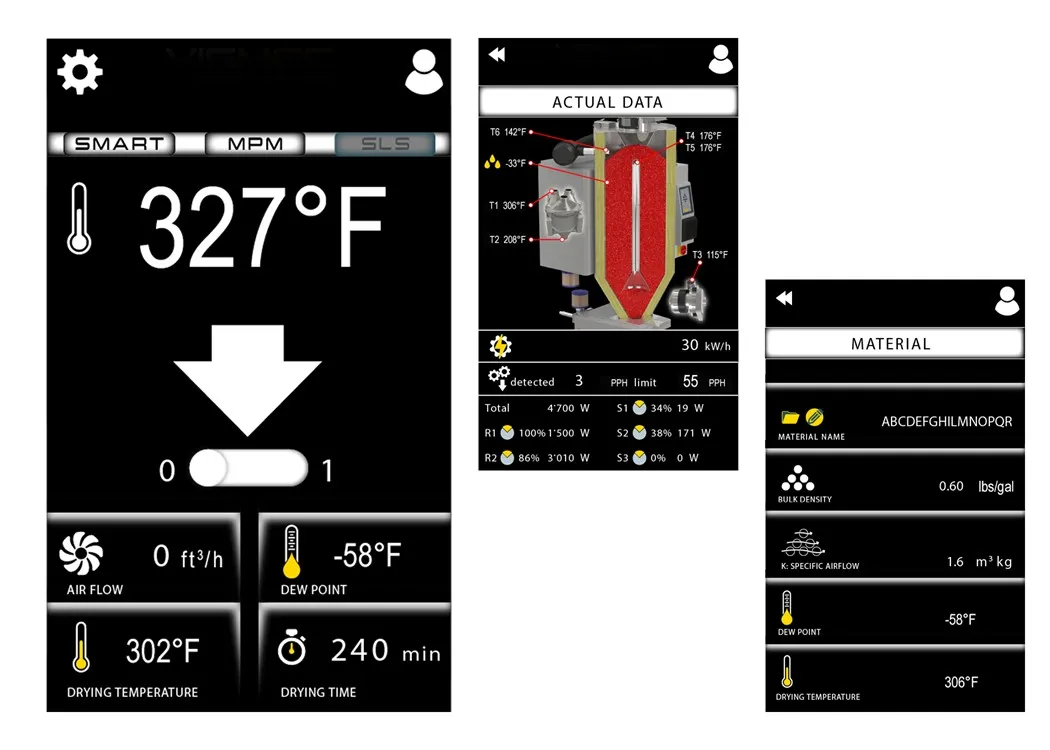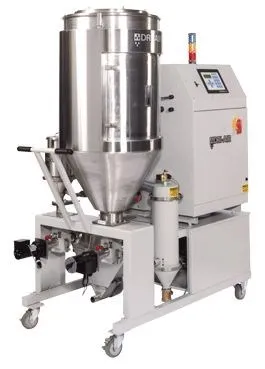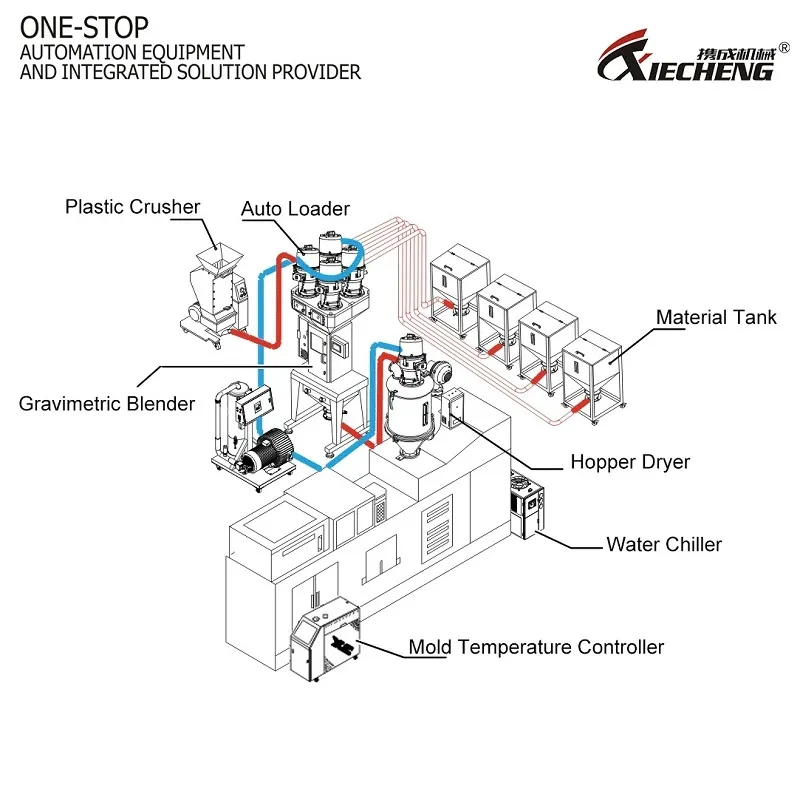Complete Guide to Plastic Resin Dryers: Technology and Applications

Introduction to Plastic Resin Drying Technology
Plastic resin dryers are essential equipment in the polymer processing industry, designed to remove moisture from plastic materials before they enter manufacturing processes. Moisture content in plastic resins can lead to significant quality issues in finished products, including surface defects, reduced mechanical properties, and processing difficulties. The drying process is critical because many plastic materials are hygroscopic, meaning they naturally absorb moisture from the atmosphere.
The importance of proper resin drying cannot be overstated. In injection molding, extrusion, blow molding, and other plastic manufacturing processes, undried resin can cause bubbling, splay marks, reduced impact strength, and dimensional instability. Modern resin dryers employ advanced technologies to ensure precise moisture control, which is vital for maintaining product quality and manufacturing efficiency.
Types of Plastic Resin Dryers
Desiccant Dryers
Desiccant dryers are the most common type used in plastic processing facilities. These systems use desiccant materials, typically silica gel or molecular sieves, to absorb moisture from the air stream that passes through the resin. Desiccant dryers can be further categorized into twin-tower and rotary designs.

Hot Air Dryers
Hot air dryers are simpler systems that use heated air to remove moisture from plastic resins. While less efficient than desiccant dryers for highly hygroscopic materials, they are cost-effective for non-hygroscopic plastics or applications where extremely low moisture levels are not required.
Vacuum Dryers
Vacuum dryers operate by reducing atmospheric pressure around the resin, which lowers the boiling point of water and facilitates moisture removal at lower temperatures. This method is particularly useful for heat-sensitive materials that could degrade at higher drying temperatures.
Key Components of Resin Drying Systems
Hopper Design and Insulation
The drying hopper is where the actual moisture removal occurs. Proper hopper design includes adequate insulation to maintain consistent temperatures, appropriate geometry for material flow, and sufficient capacity to support continuous production. Insulated hoppers prevent heat loss and ensure energy efficiency.
Desiccant Bed Systems
The heart of desiccant dryers is the desiccant material itself. Molecular sieves are preferred for applications requiring extremely low dew points, while silica gel is suitable for less demanding applications. The desiccant regeneration system is crucial for maintaining drying efficiency over time.
Control Systems and Monitoring
Modern resin dryers feature sophisticated control systems that monitor and adjust temperature, airflow, and dew point. Programmable logic controllers (PLCs) and touchscreen interfaces allow operators to set precise drying parameters and track system performance.

Drying Parameters and Their Impact
| Parameter | Typical Range | Impact on Drying | Considerations |
|---|---|---|---|
| Drying Temperature | 65°C - 180°C | Higher temperatures increase moisture removal rate | Must not exceed material's heat resistance |
| Dew Point | -40°C to -20°C | Lower dew points enable better drying | Affects final moisture content achievable |
| Drying Time | 2 - 6 hours | Longer times ensure complete drying | Must balance with production requirements |
| Airflow Rate | 0.5 - 2.0 m³/min | Adequate airflow ensures proper heat transfer | Too high can cause material fluidization |
Material-Specific Drying Requirements
Hygroscopic vs. Non-Hygroscopic Materials
Understanding the difference between hygroscopic and non-hygroscopic materials is fundamental to proper dryer selection and operation. Hygroscopic materials (such as PET, PC, Nylon) require desiccant drying, while non-hygroscopic materials (like PS, PP, PE) can often be processed with simpler hot air systems.
Common Plastic Materials and Their Drying Needs
| Material | Drying Temperature | Drying Time | Target Moisture Content | Special Considerations |
|---|---|---|---|---|
| PET (Polyethylene Terephthalate) | 150°C - 180°C | 4 - 6 hours | < 0.005% | Extremely hygroscopic, requires precise control |
| PC (Polycarbonate) | 120°C | 3 - 4 hours | < 0.02% | Sensitive to overheating |
| Nylon (PA6, PA66) | 80°C | 4 - 6 hours | < 0.1% | Can oxidize if dried too hot |
| ABS (Acrylonitrile Butadiene Styrene) | 80°C - 85°C | 2 - 4 hours | < 0.1% | Moderately hygroscopic |

Energy Efficiency and Environmental Considerations
Energy-Saving Technologies
Modern resin dryers incorporate several energy-saving features, including heat recovery systems, improved insulation, and smart controls that optimize drying cycles based on material type and ambient conditions. Variable frequency drives (VFDs) on blowers and pumps further reduce energy consumption.
Environmental Compliance
Resin drying systems must comply with environmental regulations regarding energy consumption and emissions. Many manufacturers are developing more sustainable drying technologies, including systems that use less desiccant material or incorporate renewable energy sources.
Maintenance and Troubleshooting
Regular Maintenance Procedures
Proper maintenance is essential for consistent dryer performance. Key maintenance tasks include desiccant replacement, filter cleaning, calibration of sensors, and inspection of heating elements. Preventive maintenance schedules should be established based on operating hours and material types processed.
Common Issues and Solutions
| Problem | Possible Causes | Solutions |
|---|---|---|
| Insufficient Drying | Low temperature, short drying time, high dew point | Increase temperature/time, check desiccant, verify dew point |
| Material Degradation | Excessive temperature, extended drying time | Reduce temperature/time, verify material specifications |
| High Energy Consumption | Poor insulation, inefficient regeneration, air leaks | Improve insulation, optimize regeneration cycle, seal leaks |
| Inconsistent Drying | Uneven airflow, bridged material, sensor failure | Check airflow distribution, verify material flow, calibrate sensors |

Future Trends in Resin Drying Technology
Smart Drying Systems
The integration of IoT (Internet of Things) technology and Industry 4.0 principles is transforming resin drying. Smart dryers can self-adjust parameters based on real-time moisture measurements, predict maintenance needs, and communicate with other equipment in the manufacturing cell.
Advanced Control Algorithms
Machine learning and artificial intelligence are being applied to optimize drying processes. These systems can learn from historical data to fine-tune drying parameters for specific materials and environmental conditions, improving efficiency and consistency.
Sustainable Drying Solutions
Research continues into more environmentally friendly drying technologies, including systems that use alternative energy sources, recover and reuse process heat, and minimize desiccant consumption through improved regeneration techniques.
Conclusion
Plastic resin dryers are critical components in modern polymer processing operations. Understanding the different types of dryers, their operating principles, and proper application for specific materials is essential for achieving optimal product quality and manufacturing efficiency. As technology advances, resin drying systems continue to become more efficient, intelligent, and environmentally sustainable, supporting the evolving needs of the plastics industry.


